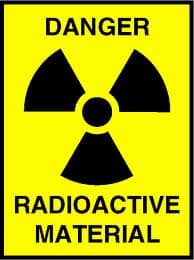Are you building Radon resistant?
If you are currently building a home or are planning on building in the future, this article is for you.
One part of the planning and building process that often goes by the wayside is the  consideration of Radon gas. Radon gas is a radioactive gas that cannot be seen or smelled. It is a decay product of radium. Radium is a decay product of naturally occurring uranium in the soil. In the state of Iowa, Radon gas can be found at concentrations at or above the recommended mitigation level in 50% – 70% of homes according to the Iowa dept. of public health. Radon gas is reported to be the second leading cause of lung cancer in America according to the American Lung Association
consideration of Radon gas. Radon gas is a radioactive gas that cannot be seen or smelled. It is a decay product of radium. Radium is a decay product of naturally occurring uranium in the soil. In the state of Iowa, Radon gas can be found at concentrations at or above the recommended mitigation level in 50% – 70% of homes according to the Iowa dept. of public health. Radon gas is reported to be the second leading cause of lung cancer in America according to the American Lung Association
 Because Radon is a gas, it can enter the living space of your home. It enters the home through cracks, holes, sump pits and any other means available.One of the reasons it enters the home is called stack effect. Stack effect occurs for different reasons. Induced stack effect is created because we pump air out of our home but do not replace it. This can happen by running a vent fan or clothes dryer. When this happens we create a negative pressure in the home which will tend to draw air in from whatever means are available. Natural stack effect is caused by warm air exiting the home and drawing air in to replace it.
Because Radon is a gas, it can enter the living space of your home. It enters the home through cracks, holes, sump pits and any other means available.One of the reasons it enters the home is called stack effect. Stack effect occurs for different reasons. Induced stack effect is created because we pump air out of our home but do not replace it. This can happen by running a vent fan or clothes dryer. When this happens we create a negative pressure in the home which will tend to draw air in from whatever means are available. Natural stack effect is caused by warm air exiting the home and drawing air in to replace it.
Building Radon resistant is simple. Prior to construction be sure to inform your contractor that you would like the home built Radon resistant. This will consist of a minimum 4″ bed of clean rock with a 6 mil polyethylene vapor barrier below the basement slab. A 3″ schedule 40 PVC pipe will be installed into your sump pit or penetrate the slab in another area. It’s best to have the pipe installed during the construction process as it can be easily hidden from view in a chase wall for aesthetic purposes. The pipe will go through the attic and penetrate the roof, similar to a plumbing vent. In the attic a junction box or electrical outlet will be installed close to the pipe. This will allow an easy installation of a mitigation fan should the home test at higher levels after construction is finished and require mitigation. The cost of building Radon resistant varies but on average is much less than installing a mitigation system after construction is complete.
of clean rock with a 6 mil polyethylene vapor barrier below the basement slab. A 3″ schedule 40 PVC pipe will be installed into your sump pit or penetrate the slab in another area. It’s best to have the pipe installed during the construction process as it can be easily hidden from view in a chase wall for aesthetic purposes. The pipe will go through the attic and penetrate the roof, similar to a plumbing vent. In the attic a junction box or electrical outlet will be installed close to the pipe. This will allow an easy installation of a mitigation fan should the home test at higher levels after construction is finished and require mitigation. The cost of building Radon resistant varies but on average is much less than installing a mitigation system after construction is complete.
If you have already built your home or have purchased an existing home and have not tested for Radon gas, I suggest you give us a call at 319-310-6044 and schedule your Radon Test today. Or, simply visit the Contact Us page of our website and schedule it there. We use the best equipment available and have all the knowledge and experience to answer your questions and help you find the best solutions.